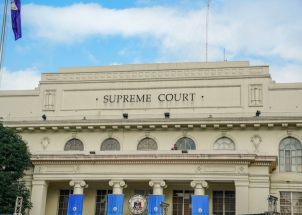‘Utilize landfill gas to produce green energy’
April 10, 2007 | 12:00am
A private organization is pushing for landfill gas utilization projects in the country to generate environment-friendly power and reduce global warming.
The biggest landfills located in Metro Manila are potential sources of "untapped" energy in the country, noted Suzette Chua of the Green Light Energy Project Inc.
"Converting waste into gas can bring economic and social gains to Filipinos while lessening greenhouse gas emissions in the country," Chua said.
She explained that the decomposition of organic waste and generation of gas is more rapid in tropical countries like the Philippines.
Chua said landfill gas extraction could generate 50 percent methane gas and 50 percent carbon dioxide in the first two phases of the entire process.
About 8,000 kilocalories per cubic meter of methane’s calorific or high-energy value will be able to produce energy, she said.
Existing landfill projects are located in Payatas, Montalban and San Mateo in Rizal, Pier 18 in Manila, and Carmona in Cavite, she added.
Chua, however,said feasibility studies on using the San Mateo landfill for this purpose were inconclusive, as it produces low quality of energy. The landfill is being run by the Metro Manila Development Authority.
Chua said Green Light’s pilot project, which is in Carmona, is being funded by the New Zealand government.
She said gas produced from the landfills could be used as cooking gas and compressed natural gas, an alternative fuel for vehicles.
However, electricity generation is the most preferred form of landfill gas utilization, Chua said.
Metro Manila’s population of 11.3 million has been estimated to generate about 7, 000 tons of garbage per day, she pointed out. – Helen Flores
Chua said landfill gas utilization aims to create awareness and knowledge about landfill gas’ value, technology transfer, and establish a working technology that is socially acceptable and economically viable. – Helen Flores
The biggest landfills located in Metro Manila are potential sources of "untapped" energy in the country, noted Suzette Chua of the Green Light Energy Project Inc.
"Converting waste into gas can bring economic and social gains to Filipinos while lessening greenhouse gas emissions in the country," Chua said.
She explained that the decomposition of organic waste and generation of gas is more rapid in tropical countries like the Philippines.
Chua said landfill gas extraction could generate 50 percent methane gas and 50 percent carbon dioxide in the first two phases of the entire process.
About 8,000 kilocalories per cubic meter of methane’s calorific or high-energy value will be able to produce energy, she said.
Existing landfill projects are located in Payatas, Montalban and San Mateo in Rizal, Pier 18 in Manila, and Carmona in Cavite, she added.
Chua, however,said feasibility studies on using the San Mateo landfill for this purpose were inconclusive, as it produces low quality of energy. The landfill is being run by the Metro Manila Development Authority.
Chua said Green Light’s pilot project, which is in Carmona, is being funded by the New Zealand government.
She said gas produced from the landfills could be used as cooking gas and compressed natural gas, an alternative fuel for vehicles.
However, electricity generation is the most preferred form of landfill gas utilization, Chua said.
Metro Manila’s population of 11.3 million has been estimated to generate about 7, 000 tons of garbage per day, she pointed out. – Helen Flores
Chua said landfill gas utilization aims to create awareness and knowledge about landfill gas’ value, technology transfer, and establish a working technology that is socially acceptable and economically viable. – Helen Flores
BrandSpace Articles
<
>
- Latest
- Trending
Trending
Latest































